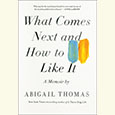Through the Eyes of Dogs
Colin Dayan considers the human-canine bond in With Dogs at the Edge of Life
You don’t have to look far to see the troubling contradictions in the human-dog relationship. For every big-box pet emporium filled with expensive, unnecessary merchandise for precious fur babies, there’s a shelter filled with stray and abandoned dogs doomed to die by lethal injection. News stories about noble K9 officers dying in the line of duty share our computer screens with horrific accounts of pit bulls mauling little children to death. People see dogs as adored companions and disposable nuisances, heroic sweethearts and terrifying demons. In her latest book, With Dogs at the Edge of Life, Vanderbilt professor Colin Dayan explores those contradictions from a place of passionate, unorthodox sympathy with the dogs, a perspective that prompts her to “reconsider the ethical life: the conscience it demands, the liabilities it incurs.
 Dayan, a scholar who has long studied the complex intersection of law, culture, and ethics, takes a three-pronged approach to her subject in With Dogs at the Edge of Life. The first section of the book, “Like a Dog,” is a memoir that finds a connection between Dayan’s affinity for dogs and the fear and unhappiness she felt growing up in Atlanta during the 1950s and 60s. She was frightened by the racist violence around her, the hate that “caused fires to start, glass to break, guns to kill, clubs to hit, dogs to chase and bite.” Those memories haunt her when she walks her pit bull around the streets of Nashville and notes the smiles she gets from some white men. Are they, she wonders, inviting her “to bond with them” in shared admiration for the dog, or are they giving her “that same old lethal grin,” the one she remembers so well from the sadists of her girlhood?
Dayan, a scholar who has long studied the complex intersection of law, culture, and ethics, takes a three-pronged approach to her subject in With Dogs at the Edge of Life. The first section of the book, “Like a Dog,” is a memoir that finds a connection between Dayan’s affinity for dogs and the fear and unhappiness she felt growing up in Atlanta during the 1950s and 60s. She was frightened by the racist violence around her, the hate that “caused fires to start, glass to break, guns to kill, clubs to hit, dogs to chase and bite.” Those memories haunt her when she walks her pit bull around the streets of Nashville and notes the smiles she gets from some white men. Are they, she wonders, inviting her “to bond with them” in shared admiration for the dog, or are they giving her “that same old lethal grin,” the one she remembers so well from the sadists of her girlhood?
Dayan writes at some length in “Like a Dog” about the dogs that have been central in her life, and the bond with them she describes is one that many, but not all, dog owners will recognize: intense, sensual, and at the same time somehow spiritual. She is drawn to the way dogs “live on the track between the mental and the physical and sometimes seem to tease out a near-mystical disintegration of the bounds between them.” That liminal state holds, for her, revelatory possibilities: “Their relentless passion and full heart compel a new understanding of spirit and a new appreciation of flesh.”
Dayan’s passion for her dogs is not sentimental or soft, and there are a few passages in “Like a Dog” that may put off readers with a “fur baby” mentality toward their animals. They’ll likely be even more distressed by some of the material in the book’s second section, “When Law Comes to Visit.” Here Dayan recounts instances of legal persecution and harassment of dog owners, most notably Floyd Boudreaux, a Louisiana pit-bull breeder charged with running a dogfighting operation in 2005. Authorities raided his home and confiscated fifty-seven dogs, many of them puppies. Though all the dogs were healthy and only a few bore old marks suggesting they might have been used to fight, the Louisiana SPCA euthanized every one of them within days of the raid, declaring them inherently dangerous animals. Boudreaux was ultimately acquitted of all charges, but it was a bitter victory. All his beloved dogs were dead, and the bloodline his family had been developing for decades was wiped out.
 Boudreaux, as Dayan admits, is not an entirely sympathetic victim. He was, in fact, a former dogfighting man, and his dogs were kept chained in conditions that affluent, urban dog owners would disapprove of. Nevertheless, Dayan persuasively argues that terrible injustice and cruelty were committed against Boudreaux and his dogs, and she sees this case as illustrative of something deeply twisted in prevailing ideas about “humane” treatment of animals. How, she asks, can the moral righteousness about protecting animals that drives the prosecution of someone like Boudreaux be reconciled with the act of killing healthy, innocent dogs? To Dayan, executing animals while “speaking the language of salvation” is evil as well as absurd, and she does not shy away from comparing it to the Nazi rationalizations for mass murder.
Boudreaux, as Dayan admits, is not an entirely sympathetic victim. He was, in fact, a former dogfighting man, and his dogs were kept chained in conditions that affluent, urban dog owners would disapprove of. Nevertheless, Dayan persuasively argues that terrible injustice and cruelty were committed against Boudreaux and his dogs, and she sees this case as illustrative of something deeply twisted in prevailing ideas about “humane” treatment of animals. How, she asks, can the moral righteousness about protecting animals that drives the prosecution of someone like Boudreaux be reconciled with the act of killing healthy, innocent dogs? To Dayan, executing animals while “speaking the language of salvation” is evil as well as absurd, and she does not shy away from comparing it to the Nazi rationalizations for mass murder.
With Dogs at the Edge of Life concludes with “Pariah Dogs,” a consideration of several films that focus on the difficult status of street dogs within human communities. Dayan’s discussion of the films, (which include Barking Island, a 2010 Palme d’Or winner) is deeply moving, and at times more frankly emotional than her memoir. The brutality of the subject matter and Dayan’s deep sympathy with the dogs make for difficult reading, but this section of the book is the most successful at forcing the reader to “reconsider the ethical life.” In Dayan’s vision, the street dogs have a relational knowledge and a way of experiencing the world that transcends our human categories and power hierarchies. To know life as the dogs know it, even if we can do so only incompletely, is to find, in Dayan’s words, “an anchor in the terror, a place to stand in the chaos.”

Maria Browning is a fifth-generation Tennessean who grew up in Erin and Nashville. A graduate of Mount Holyoke College, she has attended the Clothesline School of Writing in Chicago, the Moss Workshop with Richard Bausch at the University of Memphis, and the Sewanee Writers’ Conference. She lives in White Bluff.


